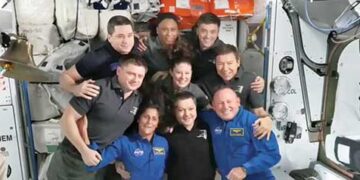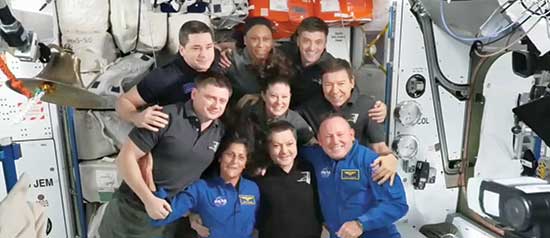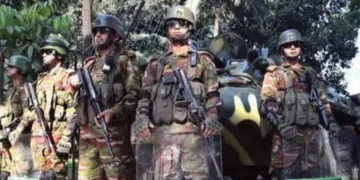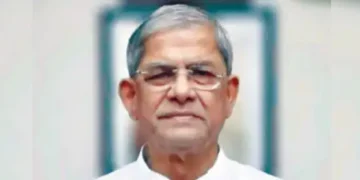Team Blitz India
THE Boeing Starliner with Indian-origin astronaut Sunita Williams and her crewmate Butch Wilmore safely docked with the International Space Station (ISS).
The 59-year-old astronaut has become the first woman to pilot and test a new crewed spacecraft on its maiden mission.
Ms Williams, who has earlier carried an idol of Lord Ganesh and the Bhagavad Gita to space, is back on the ISS for her third trip. The docking occurred at 1:34 p.m. ET. Steps were taken to more firmly secure the connection between Starliner and the space station’s port, and the docking was completed about 20 minutes later.
“Nice to be attached to the big city in the sky,” Wilmore said after docking was confirmed. Pressure was equalized between Starliner and the station, and the hatch between the two opened at about 3:46 p.m. ET. Wilmore and Williams were welcomed with a ringing bell and plenty of hugs from the seven astronauts and cosmonauts already on board. With their arrival, there are now nine people working and living on the ISS.
Dance party
“That’s the way to get things going,” Ms Williams said while speaking about her “dance party”. Calling her crewmembers “another family”, she thanked them for “such a great welcome”.
NASA has always wanted an alternative to the SpaceX Crew Module to ferry astronauts and the Boeing Starliner is shaping into just that as part of the commercial crew programme. “The launch yesterday and docking today puts the Starliner on a path to certification to enabling continued exploration and science that benefits humanity,” said Jim Free, NASA Associate Administrator, during a news conference Thursday.
Wilmore and Williams will spend the next eight days on the orbiting laboratory. The crew brought a much-needed replacement pump that processes urine aboard the station and turns it into drinking water.
Helium leaks
After a successful launch that was a decade in the making, Boeing’s Starliner mission experienced helium leaks and a temporary loss of thrusters during its journey to the space station, according to NASA.
The flight control team will continue to monitor the leak rates in Starliner’s propulsion system and after docking, all of Starliner manifolds were closed per normal plans and currently, there are no active leaks.
NASA and Boeing determined the crew was safe and told the duo to go to sleep while they continue to look at the data. The crew was supposed to sleep for nine hours, but the troubleshooting effort cut into an hour of rest time.
































